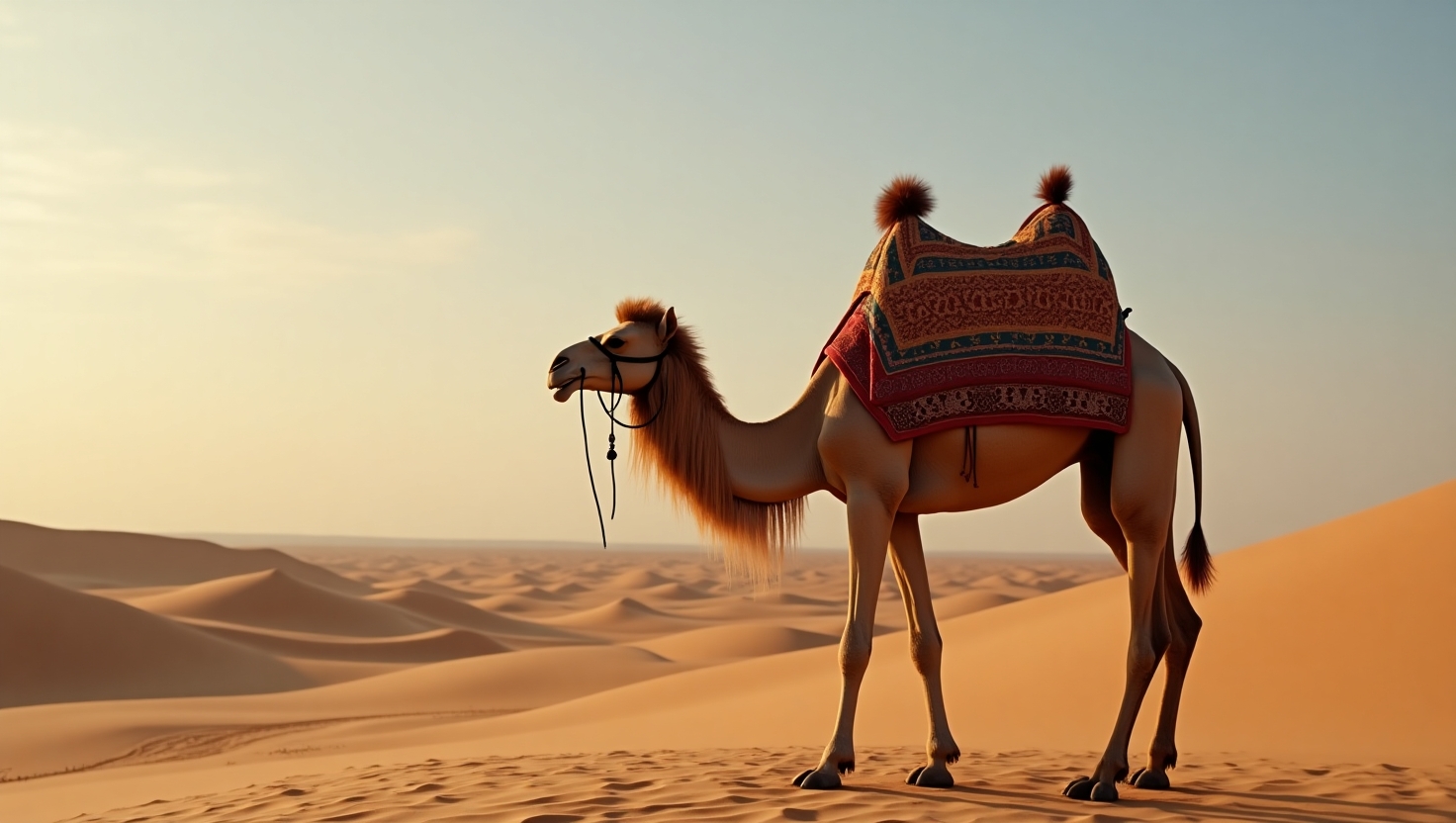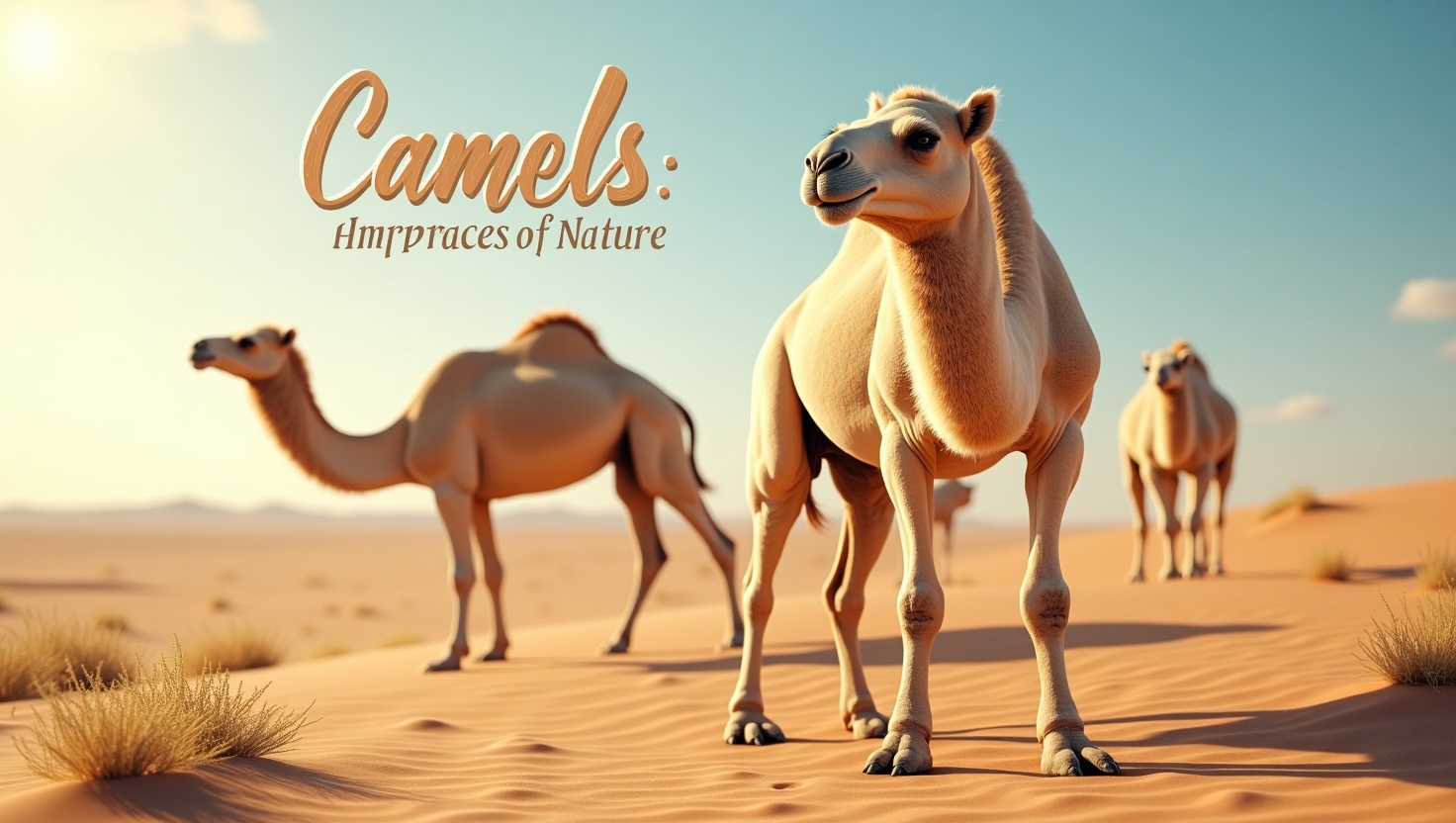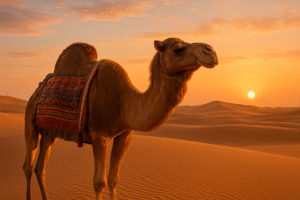Camels: Masterpieces of Nature
Introduction
You stupid camel!” “You bactrian camel!” – Camels have a very bad reputation. Yet these desert animals are extremely intelligent and possess fascinating abilities.In this article we will explore general information about camel.
- From Prototylopus to the camel
- General information about camels
- Bactrian camels
- Dromedaries
- Vicuñas and guanacos
- lamas and alpacas
From Prototylopus to the camel

The humps don’t determine what makes a camel. The family includes not only the two-humped Bactrian camel and the one-humped dromedary, but also their humpless South American relatives, the vicuña, guanaco, llama, and alpaca.
The Prototylopus was as large as a hare. While it disappeared without a trace over the course of history, close relatives were more successful in developing survival strategies. These genera, referred to by scientists as pre-camels, began migrating about ten million years ago.
The ancestors of guanacos and vicuñas populated South America. Others migrated from North America to the Old World via the Bering Strait, which was still temporarily dry at the time.
In North Africa and Arabia, they evolved into the one-humped dromedary, and in Asia into the two-humped Bactrian camels.The ancestors of camels died out in North America around 10,000 years ago.
General information about camels
Whether camels from the Old World or the New World, they all belong to the family of calloused animals in the animal kingdom. They walk on two toes, the third and fourth, which are equipped with thick, springy pads.
The camels are also united by their rocking gait. The legs of one side are always lifted simultaneously, causing the rider to sway back and forth as if on high seas.
Dromedaries and Bactrian camels can be distinguished from their American relatives primarily by their body structure. Not only do they alone carry humps of fat on their backs as energy reserves, but they are also twice as large and significantly heavier. While an adult Bactrian camel can weigh up to 1,000 kilograms, a vicuña weighs a maximum of 55 kilograms.
A dromedary stands in a desert landscape. Withered trees can be seen in the background.They are all tough
Bactrian camels.
You should check 5 Popular misconceptions about camels.
To this day, the Bactrian camel is widespread throughout much of Asia. However, as a wild animal, only a small remaining population of about 1,000 remains in remote Chinese and Mongolian deserts. Other than that they can only survive on salt water, not much is known about these shy animals.
Dromedaries

The dromedary is also very popular as a pet and is widespread in Africa and Arabia. It is unknown when the last wild dromedaries became extinct.
German biologists Birgit Dörges and Jürgen Heucke were obsessed with the question of their natural behavior. Therefore, they observed feral dromedaries in the Australian outback for over 20 years. The descendants of formerly imported working camels constitute the last large population of wild dromedaries there.
The two biologists discovered that camel stallions must be in good physical condition, as bloody territorial fights over their mare groups and strenuous matings are commonplace during the breeding season. A grueling task that many stallions voluntarily pass on to a fellow male after some time.
After a gestation period of twelve to fourteen months, the mares separate from the group to give birth. They give birth in a hiding place, too afraid that aggressive bulls might kill the newborn.
Only after three weeks do they rejoin their group and form a nursery together with other mares and their offspring. While one mother takes turns taming the young camels, the others search for food in peace.
Vicuñas and guanacos

A high-pitched warning whistle sends the shy vicuñas running away. They are the smallest and most delicate of the camels, but extremely robust. They defy the icy winters and hot summers of the Andean plateau .
Their hearts are unusually large, enabling them to live at altitudes of up to 5,500 meters. Their only food is the tough, dry grass of the mountain pastures, which is why they must drink every day.
There are twice as many of their relatives, the wild guanacos. They are much more flexible than the vicuñas.. They inhabit lush pastures and barren grasslands. They are also found in extremely arid regions.
Like their relatives from Africa and Asia, they obtain enough moisture from leaves and other plants to survive for long periods without water.
Two adult guanacos and a young one stand on an embankment. Guanacos have long, black-grey snouts
Llamas and alpacas

If a llama or alpaca pins its ears back and looks particularly unhappy, it’s best to take cover. While these animals rarely spit on humans, if they get hit by the mixture of spit and stomach contents, it’s extremely unpleasant.
Both domesticated breeds inherited the unappetizing behavior from their wild ancestors, the guanacos and vicuñas. They use it primarily to establish their hierarchy within the herd.
Llamas were bred from wild guanacos as pack animals in pre-Columbian times. These large and strong animals can carry up to 35 kilograms without complaint. This makes them too weak for riding, but they are still a popular means of transport in inaccessible areas.
The smaller alpacas, on the other hand, are bred for their wool. Whether they are descended from guanacos, vicuñas, or both is not yet definitively known. Alpacas and llamas are finding increasing numbers of owners in Germany, particularly due to their gentle nature.
How Much Do You Know About Camels?
Camels are much more than just desert animals. Test your knowledge of their history, biology, and behavior with this 5-question quiz!
Q1: Which animal is considered the earliest ancestor of modern camels?
Q2: What distinguishes Old World camels from New World camels?
Q3: What special trait allows vicuñas to survive at high altitudes?
Q4: What behavior do llamas and alpacas use to show dominance?
Q5: Where do the last large population of wild dromedaries live today?









Hello everyone!
I came across a 143 fantastic platform that I think you should explore.
This platform is packed with a lot of useful information that you might find helpful.
It has everything you could possibly need, so be sure to give it a visit!
[url=https://filmdhamaka.in/fifa-uefa-russia/]https://filmdhamaka.in/fifa-uefa-russia/[/url]
Additionally do not neglect, everyone, — one at all times may inside the article discover responses to the the absolute tangled inquiries. Our team attempted to present the complete information using the very accessible way.